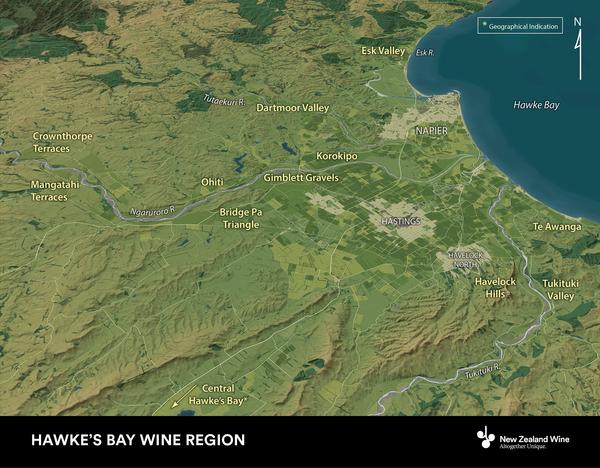
Hawke's Bay
New Zealand’s second largest wine region, sunny Hawke’s Bay has been an abundant source of fine wine since 1851.
Key statistics
4,786
8%
38

Characteristics
About the region
New Zealand’s second largest wine region, sunny Hawke’s Bay
has been an abundant source of fine wine since 1851; its well-established wine tourism trail also showcases the region’s Art Deco architecture (mainly in Napier city) and artisan producers.
Hawke’s Bay’s benign climate and high sunshine have long established the region as ideal for fruit growing. Vines were first planted in 1851 by Marist missionaries (their legacy is Taradale’s historic Mission Winery) and Hawke’s Bay enjoys a significant international reputation for producing some of the country’s best wines, red and white.
A relatively large and diverse region capable of producing a wide range of varieties to a very high standard, Hawke’s Bay is best known for its Red Blends and Chardonnay but aromatic whites are consistently good and Syrah is incredibly impressive. The climate and lengthy growing season also allows regular production of successful dessert styles. New varieties are continually trialled.
The numerous wineries and vineyards encompass both large multi-regional entities and tiny family-owned boutique producers; all share a commitment to making great wine.
With its lengthy history and verdant, productive landscape, Hawke’s Bay is home to an outstanding wine tourism culture and offers a wide variety of cellar door experiences as well as regular food and wine festivals.



